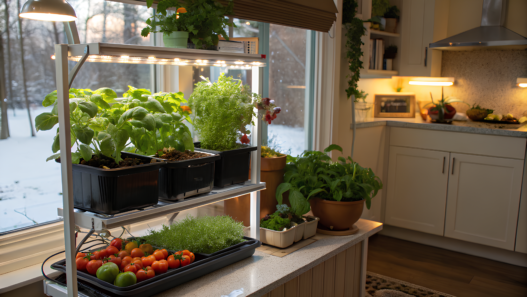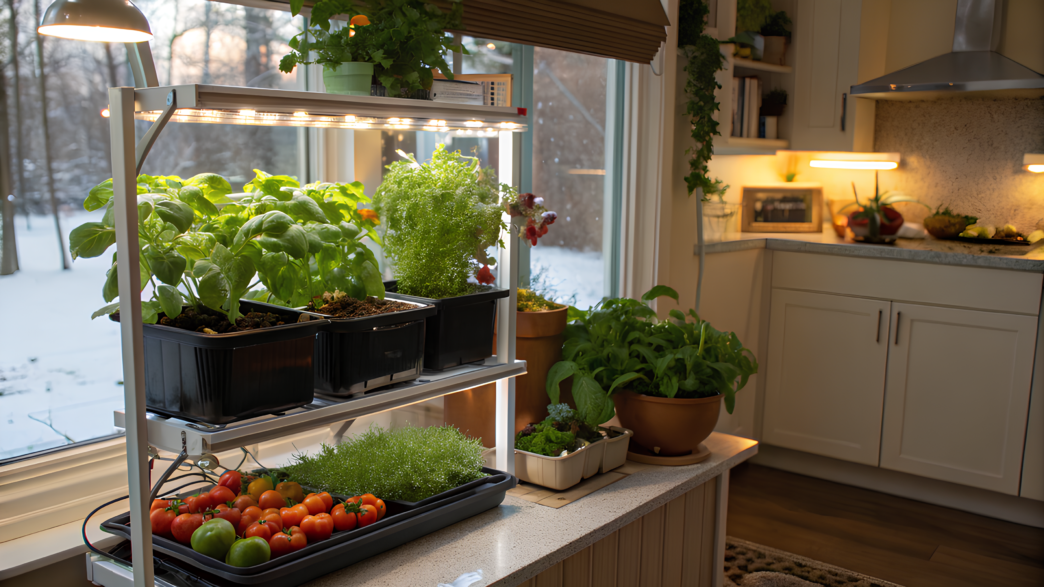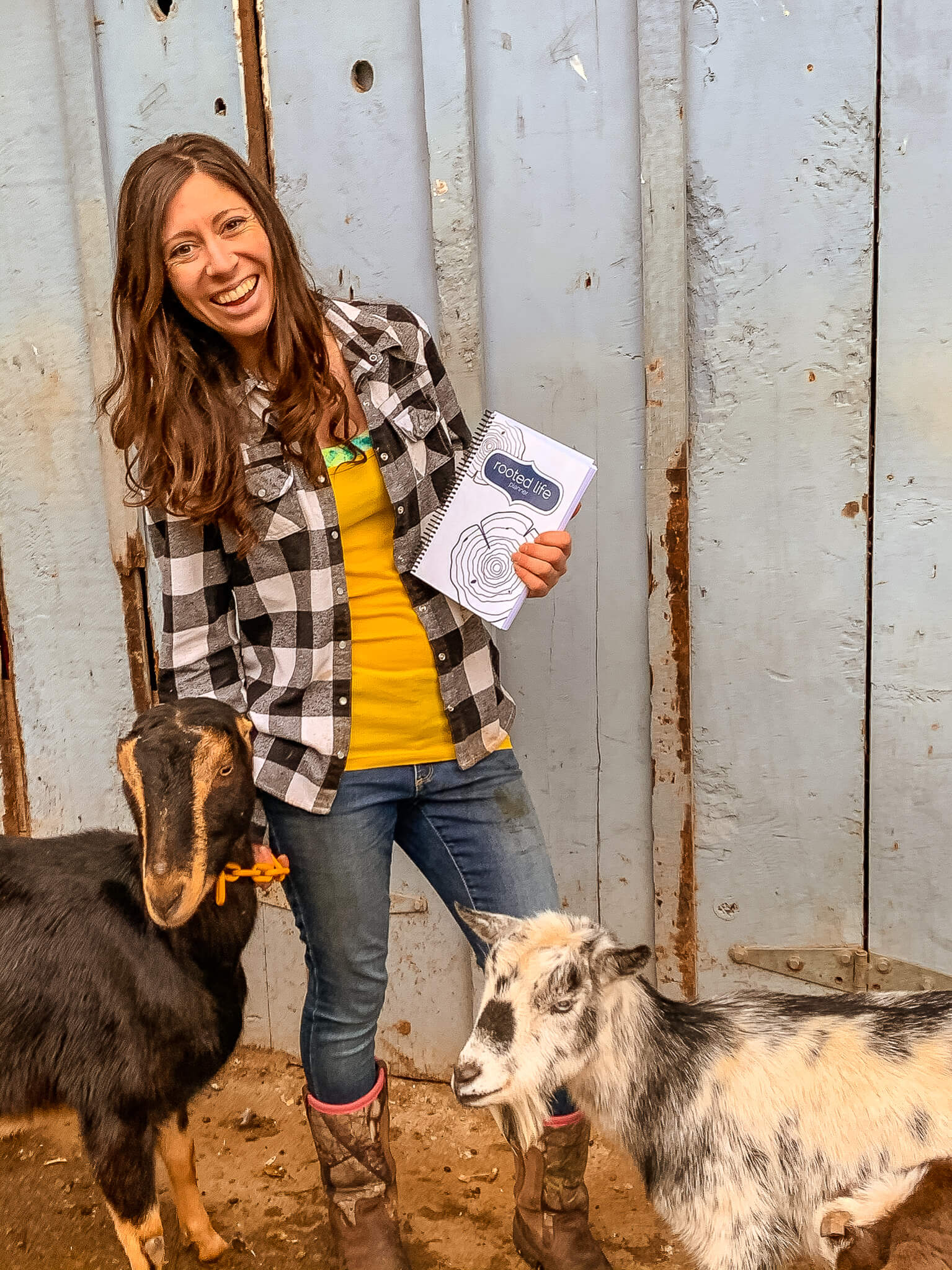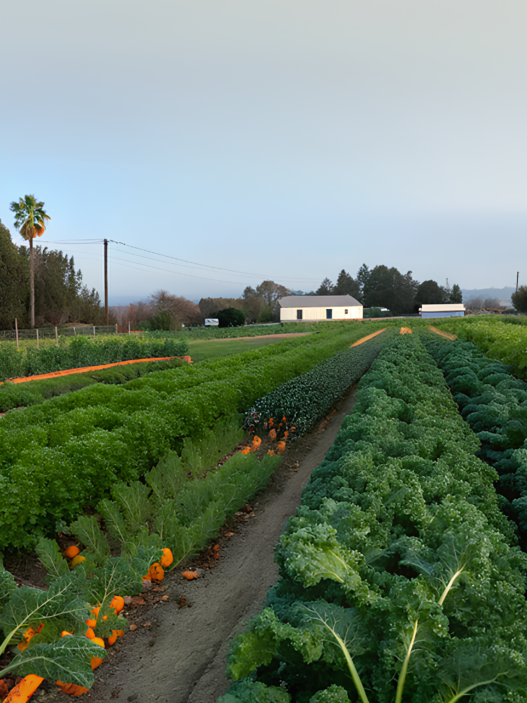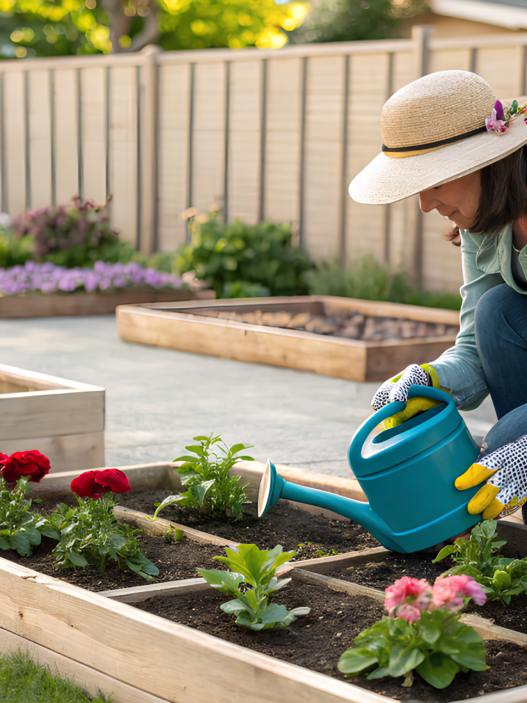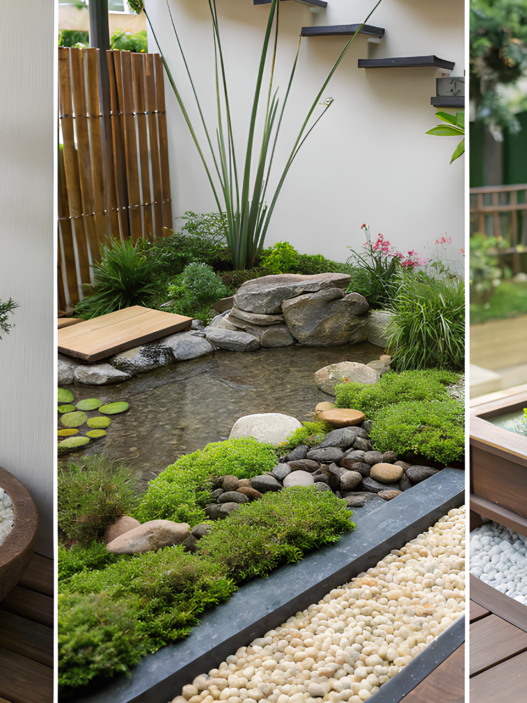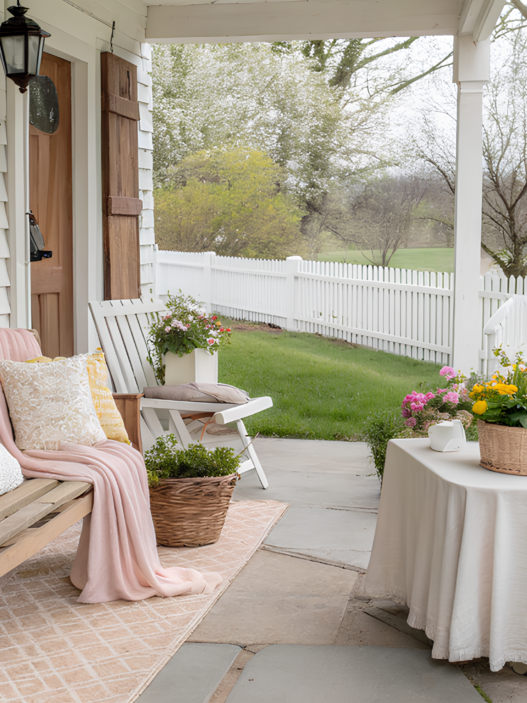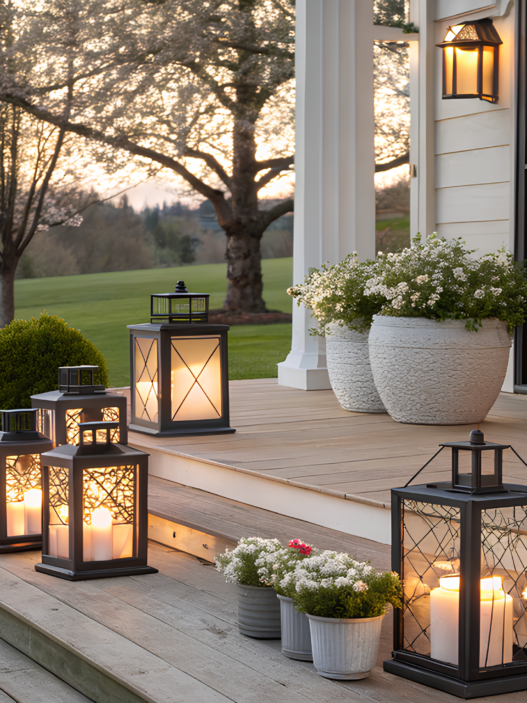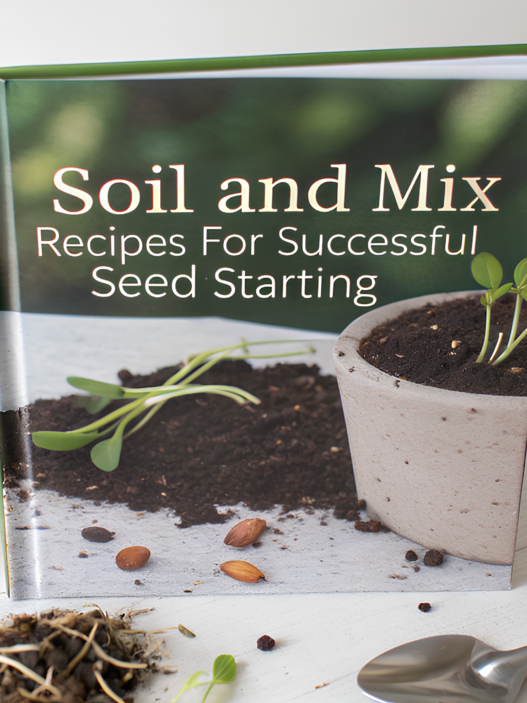In winter, when it’s cold outside and the sun rarely peeks out when darkness falls so quickly, none of us would turn down fresh, healthy vegetables for dinner. You can’t help but think about the possibility of growing vegetables indoors in the winter. And you’d be right – growing vegetables indoors in the winter is possible. You can do it. There are snowdrifts outside the window – and you’re harvesting greens and other fresh vegetables at home. In this article, I’ll detail how to create your own indoor winter garden that will provide you with fresh produce all winter long.
Why grow vegetables indoors in winter?
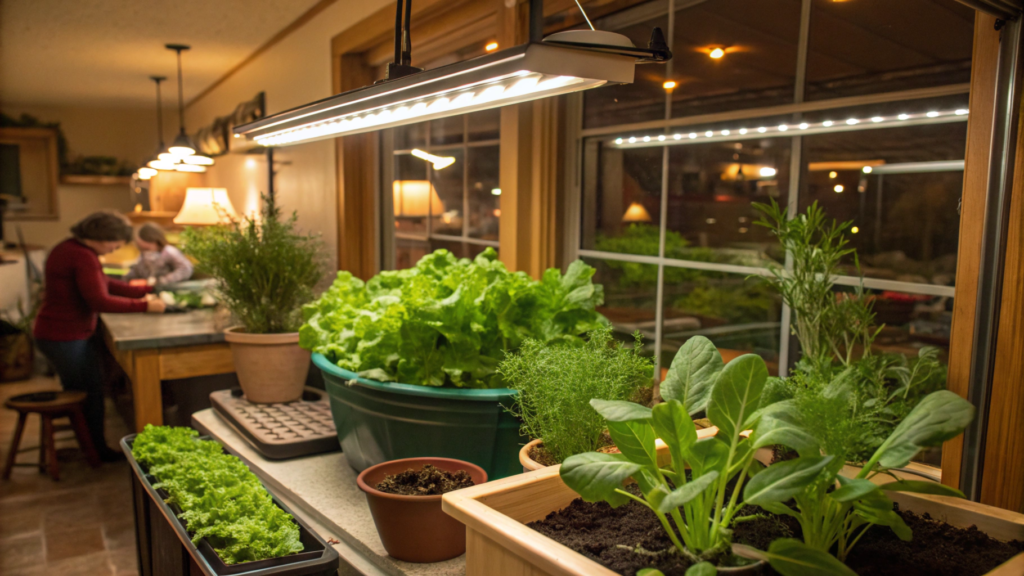
Winter is unpleasant because fresh vegetables are missing from our diet because it is not their season. Or the vegetables are brought from far away and this affects their quality. Therefore, growing your own vegetables indoors is very relevant and gives you the opportunity to have fresh vegetables in your diet all year round. It’s a treasure trove of vitamins to support your family’s health. Plus, you’ll know exactly where your vegetables came from, that they are chemical-free, that they grew before your eyes and that you personally cared for them.
Winter is a good time to start our experiment, even if you’ve never tried growing vegetables at home in winter before. And don’t get overwhelmed thinking you don’t have special skills. It’s easier than it looks. Just be patient and your vegetables will thrive at home, even when it’s freezing outside.
Choosing the right vegetables for indoor winter growing
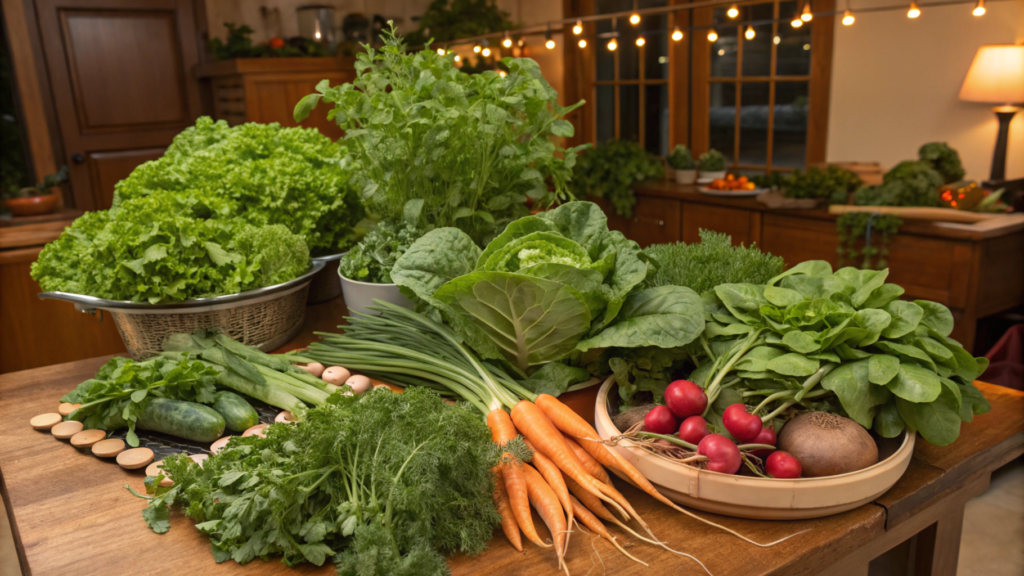
The most important thing to remember to start with is that not all vegetables are suitable for growing indoors. Some of them require more light and heat than you’ll be able to provide in winter, while others, on the other hand, do just fine in low light and cool conditions. And if you do decide to grow vegetables indoors in winter, always keep this in mind and choose the right crops.
Best vegetables for growing indoors in winter
- Leafy greens. Lettuce, spinach and kale – these green plants are cold-resistant, so we opt for them. Plus, they don’t require much light.
- Herbs. Basil, cilantro and parsley – these herbs require little space and grow quickly indoors, so it is a good and correct choice.
- Root vegetables. Carrots, radishes and beets grow well indoors. Stock deep containers for them.
- Microgreens. For a quick harvest, try planting microgreens. They grow quickly, in just a couple weeks. Plus, they’re high in nutrients.
Making space for your indoor garden
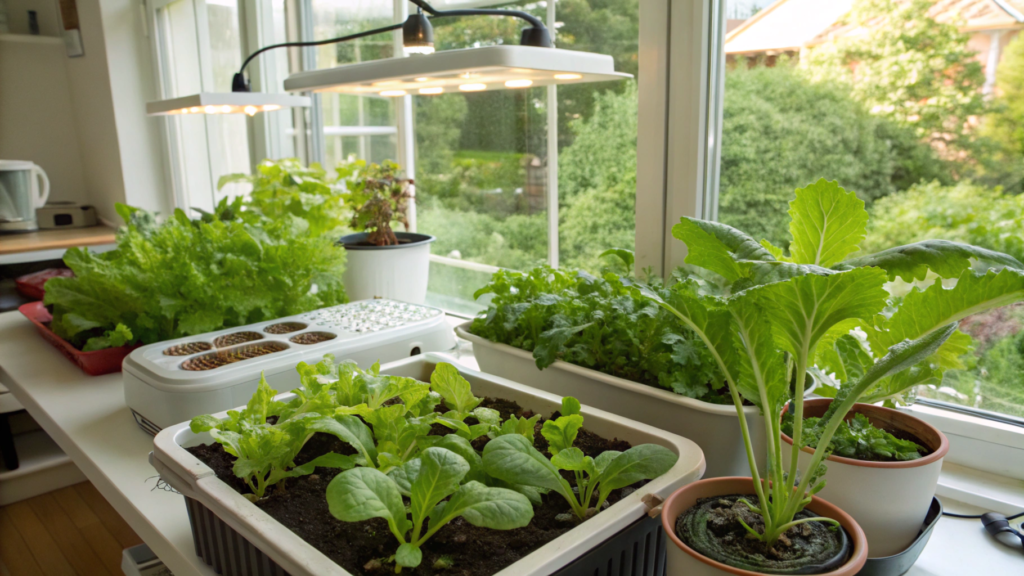
Once you’ve already decided on the vegetables you want to plant, now it’s time to start organizing the growing space inside your home. Our goal is to mimic the conditions that vegetables normally receive outdoors, namely light, warmth, and the right temperature and humidity.
Lighting Requirements
It’s understandable that winter sun may not be enough for vegetables to grow fully. Immediately I want to reassure, here with this task will perfectly cope with LED lamps for plants. You can use either fluorescent lamps, or special LED lamps that mimic sunlight, which plants need for photosynthesis. For example, leafy greens need about 12-16 hours of light per day.
If you have a lack of natural light, it is advisable to place plants near a south-facing window, as this side receives the most sunlight in winter. But still LED lamps in this case will be a more reliable option for stable results.
Humidity and temperature
The optimum temperature for most vegetables is between 18-24°C and ensures good growth indoors. The winter air is often dry, so it is simply a matter of keeping the humidity level in check. To do this, simply use a simple humidifier or a shallow bowl of water near the plants. This will also help to maintain the right level of humidity.
Plants should be placed away from drafts and heating devices such as radiators. Vegetables like warmth, so try to find a warm place where there are no sudden fluctuations in temperature.
Containers and soil
It’s important to make sure you choose the right containers. They should be big and deep enough for the root vegetables you’re growing, such as carrots. Leafy greens, on the other hand, can grow in smaller containers.
It is advisable to use a good quality potting mix, it is light, well drained and rich in nutrients. Garden soil is best avoided, as it can be too heavy, and it can also bring unwanted insects into the house.
How to water and care for vegetables indoors
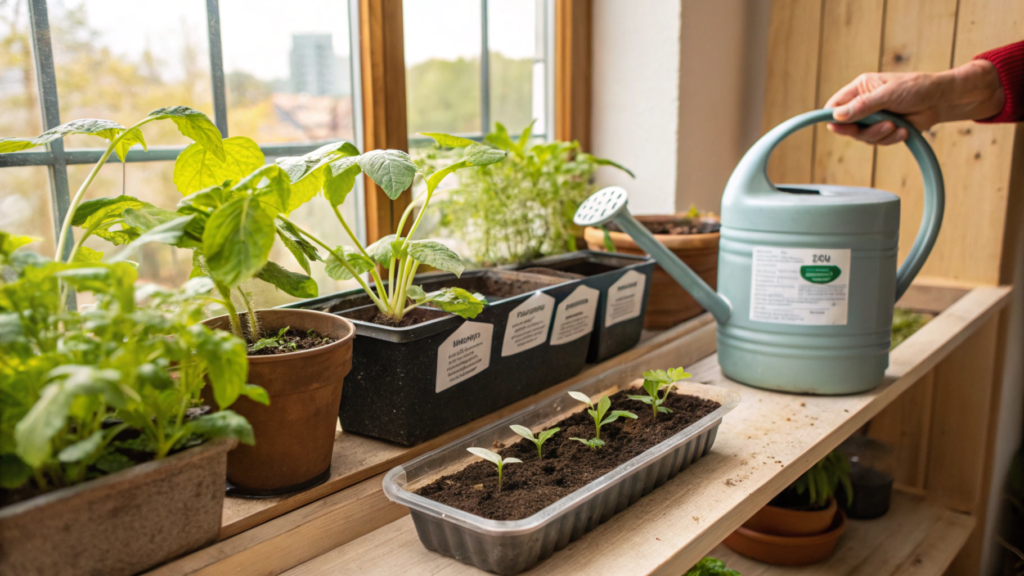
All plants need water – but in moderation, not too much. Overwatering is one of the most common mistakes when growing vegetables indoors in winter. Here’s a little hint on how to know when it’s time to water: let the top layer of soil dry out between waterings. Then just stick your finger in the soil – if it’s dry to a depth of one centimeter, it’s time to water.
Feed your indoor garden
When plants are in containers, they use up nutrients from the soil more quickly than in the open. Therefore, you’ll need to add liquid fertilizer to the containers every 2-3 weeks. Choose just the right ones for vegetables, and again, the key here is not to overdo it – plants can be sensitive to excess nutrients.
Pro Tip. You can make your own compost from kitchen waste, it will be a good nutritious fertilizer for your plants. They will be grateful to you.
Solutions to common problems
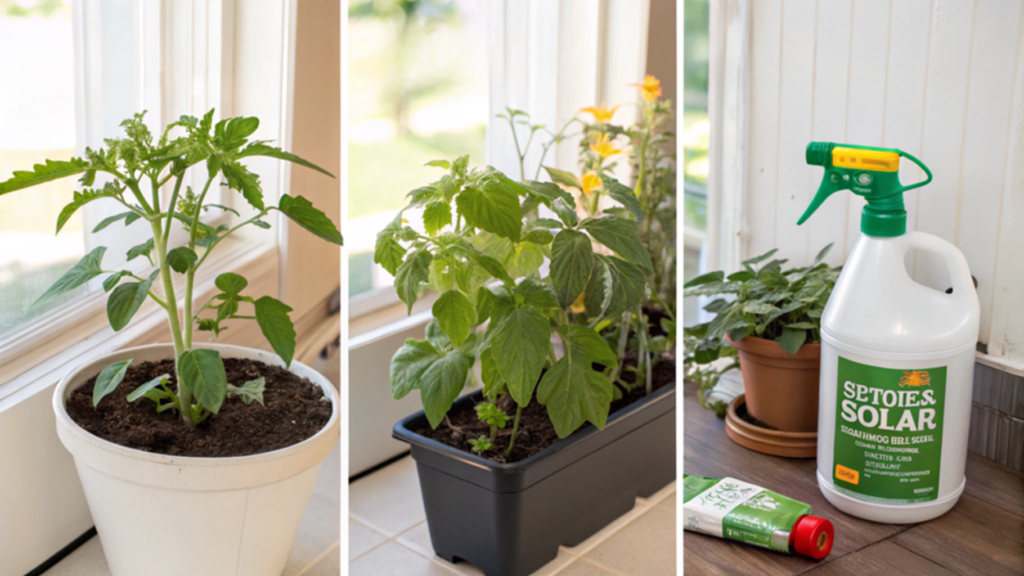
Even if you follow all the rules and guidelines, you may have occasional problems growing vegetables indoors. Here are a few common problems and their solutions:
- Weak, elongated plants. This happens when plants don’t get enough light and grow tall and thin. Try moving them closer to the light or increasing the number of LED bulbs.
- Yellowing leaves. This is likely a sign of overwatering or nutrient deficiency. Revise your watering schedule or try fertilizing more often.
- Pests. Unfortunately, indoor pests can show up indoors, too. Keep an eye out for small insects like aphids or spider mites. Natural insecticidal soap can help get rid of them.
Harvesting winter vegetables
When you harvest a crop grown with your own hands, you experience incomparable emotions. At first you harvest leafy greens, herbs will come in a month or two. And then the root crops, their growth will take a little longer. But in any case, the wait is worth it.
When you collect the first harvest of lettuce and herbs, they will continue to grow and give new leaves. Don’t forget to trim them and they will keep growing. You’ll always have an inexhaustible source of fresh vegetables right at home. Don’t you agree?
Essentials for your indoor garden
I want to recommend you some useful things that will definitely help you improve your indoor winter garden:
- LED plant lights. Check out this kit on Amazon. It provides the full spectrum of light needed for indoor vegetable growth.
- Self-watering pots. These self-watering containers are great for those who are constantly forgetting to do something, particularly watering plants.
- Potting mix. This high-quality mix is great for indoor vegetables.
Are you ready to experiment?
For many, experimentation is a way to try something new and growing vegetables indoors in winter gives you the opportunity to realize yourself in a new field. Plus you’ve provided yourself and your family with fresh produce, even when it’s freezing outside. Gardening is always a learning process where surprises happen, and not always pleasant ones, unfortunately. But overcoming them, we always learn something.
As always I want to ask what vegetables are you going to start growing indoors this winter? Share your experiences in the comments below…I really hope our tips will help you become a pro at growing vegetables indoors in winter and love it.
